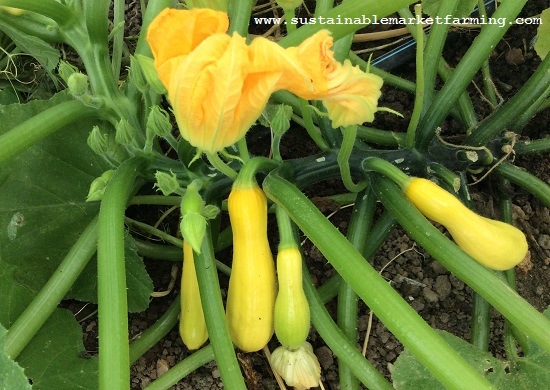
In our climate zone (7), with an average first frost date of October 14, the first half of August is the last chance to sow several vegetables and get crops from them before winter. Depending on your zone, your dates might be earlier or later. Planning and timing are crucial – if germination fails, you may not get a second chance with that vegetable. Planting now provides fresh harvests, storage crops and possibly some crops to overwinter.
There are three categories of vegetable crops to plant at this time of year:
- Warm weather crops, now or not until next year.
- Cool weather crops that grow well in spring and fall, but don’t thrive in the summer.
- Cold-hardy crops to grow during the winter.
Warm Weather Crops
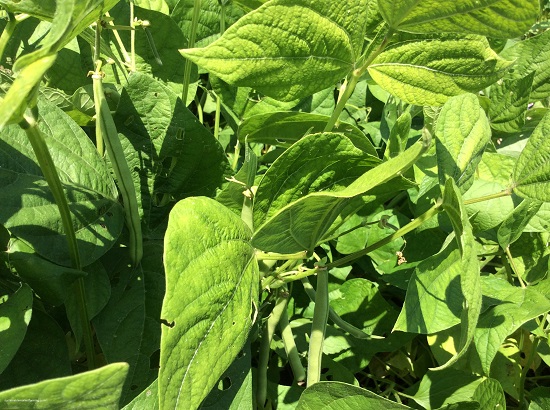
Give yourself a reasonable chance of success! We sow our last edamame 7/14 and our last sweet corn 7/16. We sow our last beans 8/1-8/3, and zucchini, summer squash and cucumbers by 8/5 at the latest.
In many parts of the country, a frost or two will be followed by a few more weeks of warm weather, so getting past the first few frosts is worth the effort. It’s easy to get extra harvests for a month or two from mature plants you already have. See my blog post on Succession Planting for working back from your frost date to determine your last worthwhile planting date. Pay attention to the weather as you approach your average first frost date, and be ready to harvest mature crops and protect plants with rowcover.
Cool Weather Spring and Fall Crops
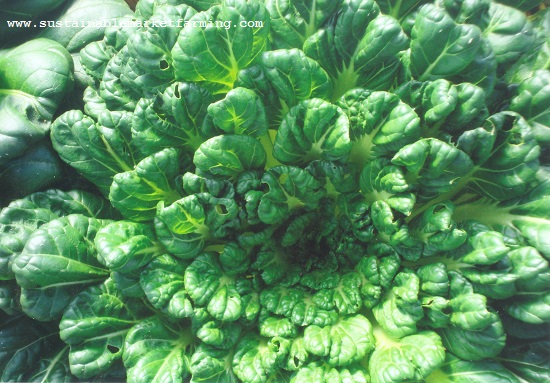
The flavor of crops produced during warm sunny days and cool nights can be a delightful combination of sweetness and crunchy succulence. Some cool-weather crops mature in 60 days or less. Mostly these are greens and fast-growing root vegetables.
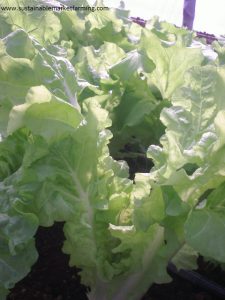
Ready in 30–35 days:
- kale, arugula, radishes,
- many Asian greens: Chinese Napa cabbage, Komatsuna, Maruba Santoh, mizuna, pak choy, Senposai, tatsoi, Tokyo Bekana and yukina savoy.
- spinach, chard, salad greens (lettuce, endives, chicories) and winter purslane.
Ready in 35–45 days:
- corn salad, land cress, sorrel, parsley and chervil.
Ready in 60 days:
- beets, collards, kohlrabi, turnips and small fast cabbage (such as Early Jersey Wakefield)
We have a chart for fall harvest crops so that we don’t have to calculate each time. It helps us ensure we don’t sow too late to get a decent harvest.
Sowing Dates for Fall Crops with Various Days to Maturity
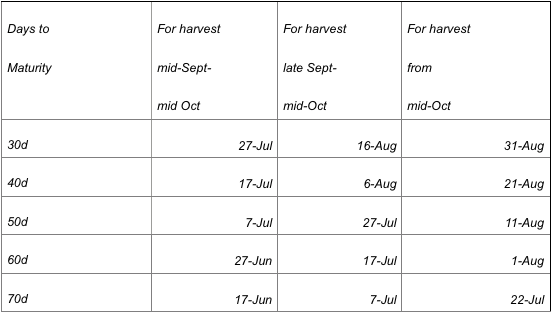
Early Purple Vienna Kohlrabi takes only 60 days from sowing to harvest in spring. Allow for the slowing rate of growth in fall (unless you will use rowcover). Kohlrabi is hardy to maybe 15°F (-9.4°C). When is it likely to get that cold? Not before the beginning of November here, so counting back 31 days in October, plus 30 in September, plus 31 in August – that’s 92 days already, more than enough. We could sow kohlrabi in early August and get a crop at the end of October.
We sow beets on 8/1, dry or presoaked for 1-2 hours in a little water – not too much, as they need to breathe, or could drown. We sow them 1/2″-1″ deep, tamp the soil, and keep the surface damp with daily watering for the 4-6 days they take to emerge. Beets prefer 50°F–85°F (10°C–29°C). I like the Cylindra beet. The shape is long (good for slicing), the skins come off easily, and the flavor is very sweet and the texture tender.
Very early in August, we sow our fall carrots, enough to store and feed us all winter. Danvers 126 is our workhorse carrot. We use an EarthWay seeder, which is light, easy to use and to empty, and comes at a reasonable price.
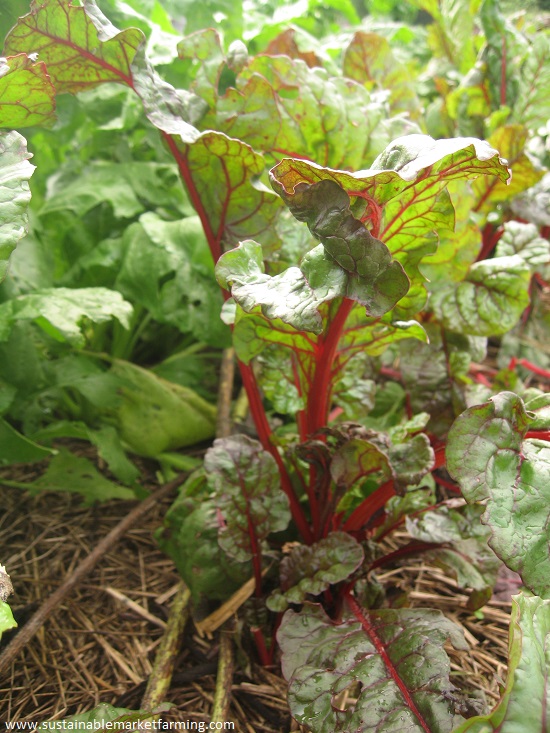
Swiss chard can also be sown here in August, for a nice fall harvest. It germinates best at 85°F (29°C). It grows big leaves within 50 days of sowing, and smaller ones after only 35 days. We sow scallions outdoors on 7/25 and 8/23. Peas can make a god fall crop if started early enough to mature before frosts. 85°F (29°C) is optimum, 95°F (35°C) maximum. Peas are easy to pre-sprout. Mature pea plants are more easily killed by frost than seedlings.
Spinach is a challenging crop in hot weather! Its optimum germination temperature is 70°F (21°C), maximum 85°F (29°C). To get around the problem of hot soils, you can wait until the soil temperature drops. The germination of purple dead nettle, henbit and chickweed are good phenology signs that it has cooled enough to sow spinach. Or you can pre-sprout seeds indoors as we do, and sow for on 9/1.
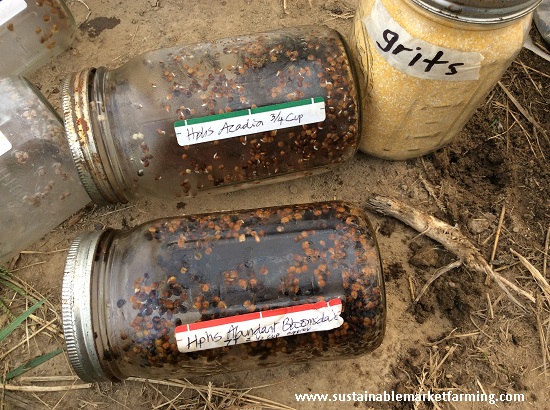
Lettuce likes soils of 40°F–80°F (4°C–27°C) with 75°F (24°C) best. The maximum germination temperature is 85°F (29°C). For best emergence, wait until late afternoon or nightfall to sow lettuce. I put ice on top of hot weather lettuce sowings, and cover with shadecloth. Jericho romaine and the Batavian varieties are very heat-resistant. Sow: every 6-7 days in June and July; every 5 days in early August; every 3 days in late August; every other day until Sept 21; and, if you have a coldframe or hoophouse to plant them in, every 3 days until the end of September.
Most brassicas will germinate fast at 86°F (30°C). The challenge is keeping the soil moist. For fall crops, we use an outdoor nursery seedbed and bare root transplants, because this fits best with our facilities and our style. Having the seedlings directly in the soil “drought-proofs” them to some extent; they can form deep roots and don’t dry out so fast. Other people might prefer to sow in flats.
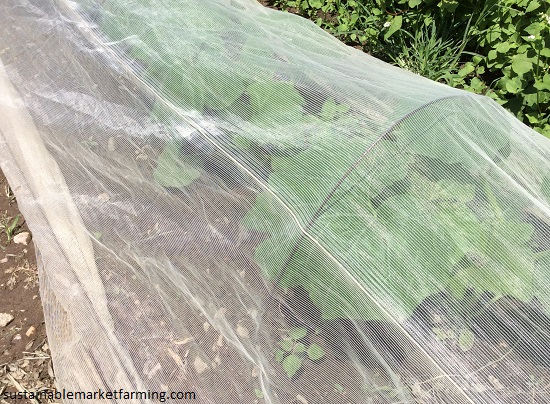
To avoid flea beetles and harlequin bugs, we cover the beds until the plants are big enough to stand up for themselves against “pest bullying”. We like ProtekNet insect mesh on wire hoops. Overly thick rowcover or rowcover resting directly on the plants can make the seedlings more likely to die of fungal diseases in hot weather – good airflow is vital.
Radishes have no trouble germinating at high temperatures. We sow winter storing radishes 8/4: Misato Rose, Miyashige Daikon and Shunkyo Semi-Long. We also sow Easter Egg small radishes.
We aim to transplant most brassicas at four true leaves (3-4 weeks after sowing). In hot weather, use younger transplants than you would in spring, because larger plants can wilt from high transpiration losses. If we find ourselves transplanting older plants, we remove a couple of the older leaves to reduce these losses.
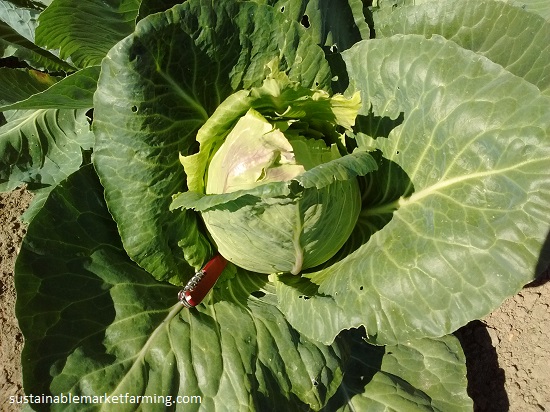
We sow broccoli and cabbage in June and July. August is too late for us to start those. Our main broccoli harvest period is 9/10 – 10/15. Among the Asian greens, we grow Blues Napa cabbage and sometimes Tokyo Bekana or Maruba Santoh for fall harvests. Komatsuna, senposai, yukina savoy and tatsoi are cold-tolerant greens we like for early winter harvests. We sow these to transplant mid-late July.
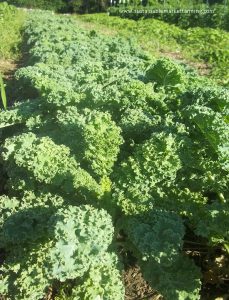
We sow 6 beds of kale, two each every 6 days, (8/4, 8/10, 8/16, 8/24) until we succeed in getting enough established. Often we’ll get patchy emergence and end up transplanting plants from one bed or one end of a bed to fill out the blank areas.
We sow our turnips 8/15 or up until 9/15 (our absolute latest). Turnips can be up the next day, even at 95°F (35°C). Rutabagas need longer than turnips, and need sowing in July. See Root Crops in July on my website for more about rutabagas.
Cold-Hardy Crops to Grow Over Winter
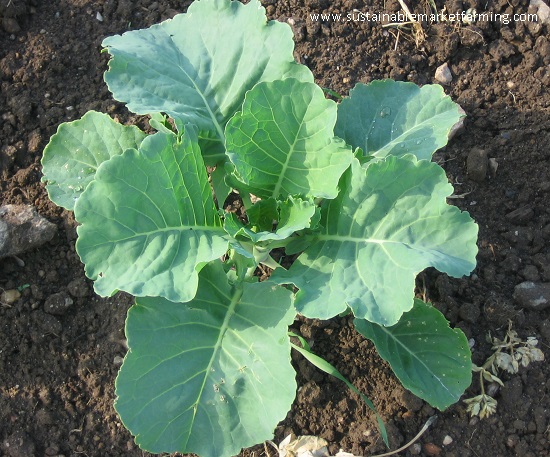
Find the winter-kill temperature of your desired crop, and choose hardy varieties. Be clear about whether you intend to harvest outdoors all winter (kale, spinach, leeks, parsnips, collards for us), or whether you want to have small crops going into winter so you can rest during the winter and be first out the gate in early spring, with crops waiting for you. We sow a couple of beds of spinach between 9/20 and 9/30 to overwinter small (under rowcover) and grow fast in the spring.
We have had some success with over-wintered carrots (sown 8/14) and cabbage transplanted 7/13 (Deadon is especially hardy).
Pam Dawling has grown vegetables at Twin Oaks Community, central Virginia for 27 years, feeding 100 people from 3.5 acres. She has written two books: Sustainable Market Farming and The Year-Round Hoophouse. She blogs weekly at https://www.sustainablemarketfarming.com
